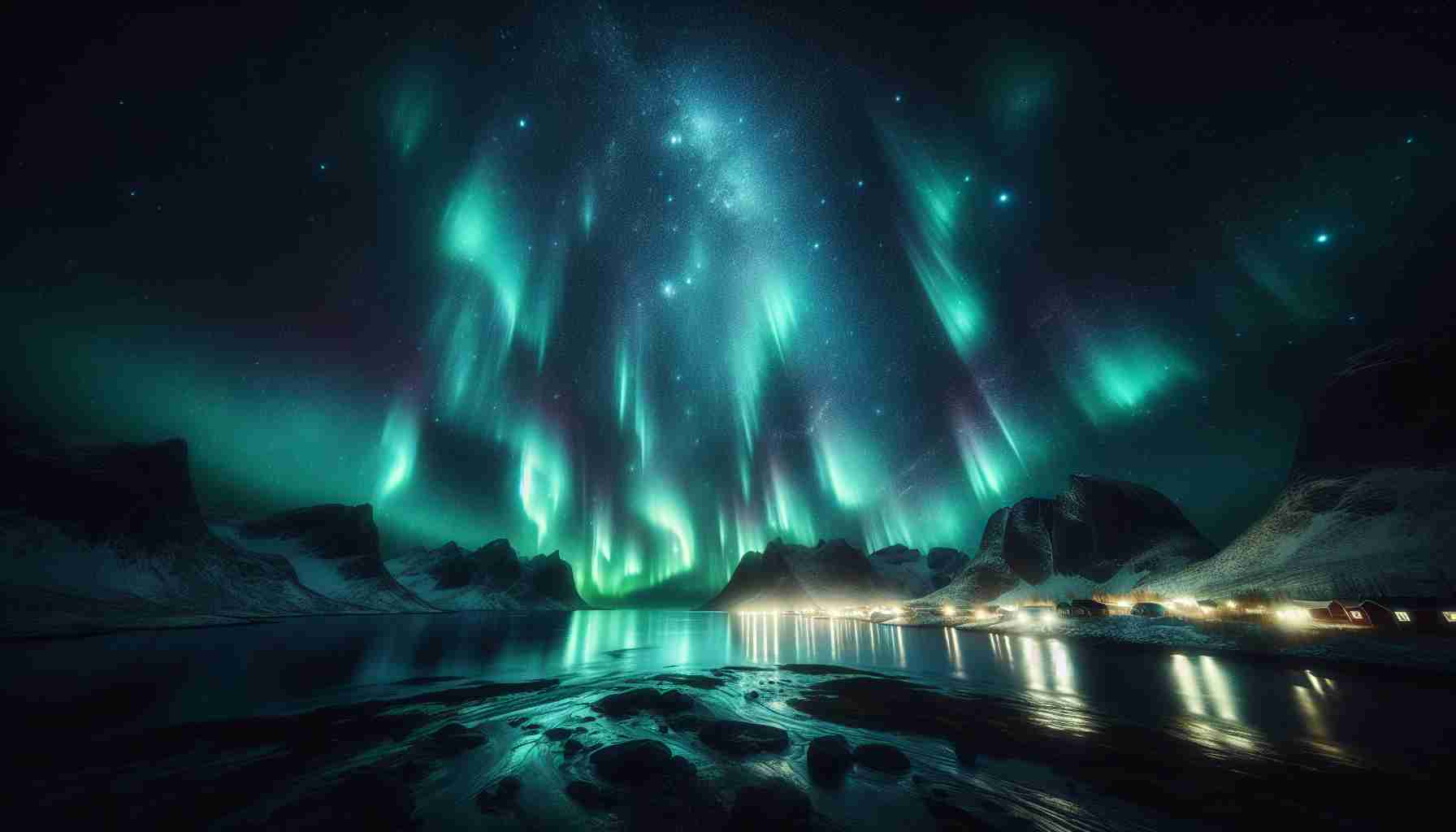As the New Year approaches, skywatchers in the northern regions of the United States may be treated to the breathtaking spectacle of the aurora borealis. Thanks to solar storms caused by plasma bursts racing toward Earth, the dazzling Northern Lights could light up the night sky early this week.
The National Oceanic and Atmospheric Administration (NOAA) noted a surge of solar activity recently, bringing higher chances for aurora sightings. Those residing in Alaska, Washington, North Dakota, South Dakota, Minnesota, Wisconsin, Michigan, New Hampshire, Vermont, and Maine should keep an eye out for this stunning light display, especially on New Year’s Eve.
Areas such as Oregon, Idaho, Wyoming, Iowa, Nebraska, Illinois, and even New York might experience a glimpse of the aurora. Observers should look towards the northern horizon, as the lights can be seen from distances of up to 1,000 kilometers.
To enhance your chances of seeing the aurora, consider your location. Head to areas with minimal obstruction from trees or buildings. The timing is crucial, with the best views typically occurring between 10 p.m. and 2 a.m. local time. Geomagnetic activity plays a role too; a more active geomagnetic field leads to stronger displays further from the poles.
Lastly, ensure you’re in a dark place, as light pollution can obscure the visibility of this breathtaking phenomenon. Prepare to be dazzled as nature puts on a spectacular show!
Witness the Stunning Northern Lights: Your Ultimate Guide to the Aurora Borealis This New Year
Introduction
As the New Year dawns, an extraordinary opportunity awaits skywatchers in the northern regions of the United States: the chance to experience the mesmerizing beauty of the aurora borealis. Thanks to heightened solar activity resulting from recent solar storms, this natural phenomenon, also known as the Northern Lights, could illuminate the night sky in a captivating display.
Understanding the Aurora Borealis
The aurora borealis occurs when charged particles emitted from the sun collide with gases in Earth’s atmosphere. This interaction causes vibrant colors to appear in the sky, predominantly greens, pinks, reds, and purples. The strength of these displays is influenced by solar winds and the current status of geomagnetic activity.
FAQs: Your Questions Answered
What causes the aurora borealis?
The aurora borealis is primarily caused by solar wind—streams of charged particles from the sun that interact with Earth’s magnetic field and atmosphere.
When is the best time to see the aurora?
The best time to view the aurora is typically from late fall to early spring, particularly between 10 p.m. and 2 a.m. local time, with heightened chances during nights of strong geomagnetic activity.
Where can I see the aurora borealis?
Locations with the highest chances of sightings include:
– Alaska
– Northern parts of Washington
– North Dakota
– Minnesota
– Wisconsin
– Michigan
– New Hampshire
– Vermont
– Maine
Additionally, areas such as Oregon, Idaho, Wyoming, Iowa, Nebraska, Illinois, and New York may also witness glimpses.
Tips for Viewing the Aurora Borealis
1. Choose the Right Location: Seek out spots with minimal light pollution, away from cities, and with an unobstructed northern view.
2. Timing is Key: Prepare for the late-night hours; being outdoors from 10 p.m. to 2 a.m. will give you the best chance of catching a show.
3. Check the Forecast: Utilize resources like NOAA’s space weather forecasts to monitor geomagnetic activity levels.
4. Prepare for Comfort: Dress warmly and bring reclining chairs or blankets for comfortable sky-watching.
Trends and Insights
With advances in forecasting technologies, predicting aurora displays has become more accessible. Enthusiasts can now rely on dedicated apps and websites that provide real-time alerts and geomagnetic readings. The merging of technology with traditional skywatching enhances the experience, making it possible for more people to enjoy this cosmic wonder.
Potential Limitations
While solar storms significantly enhance visibility, overcast skies and regional weather conditions can inhibit the view. Areas with persistent cloud cover may obscure the Northern Lights, even when geomagnetic conditions are favorable.
Conclusion
As you prepare to usher in the New Year, take the time to venture out and witness the aurora borealis. With the right planning and a little bit of luck, you could find yourself under a canopy of dancing lights, creating magical memories that will last a lifetime. For ongoing updates and forecasts, consult NOAA and local resources.
